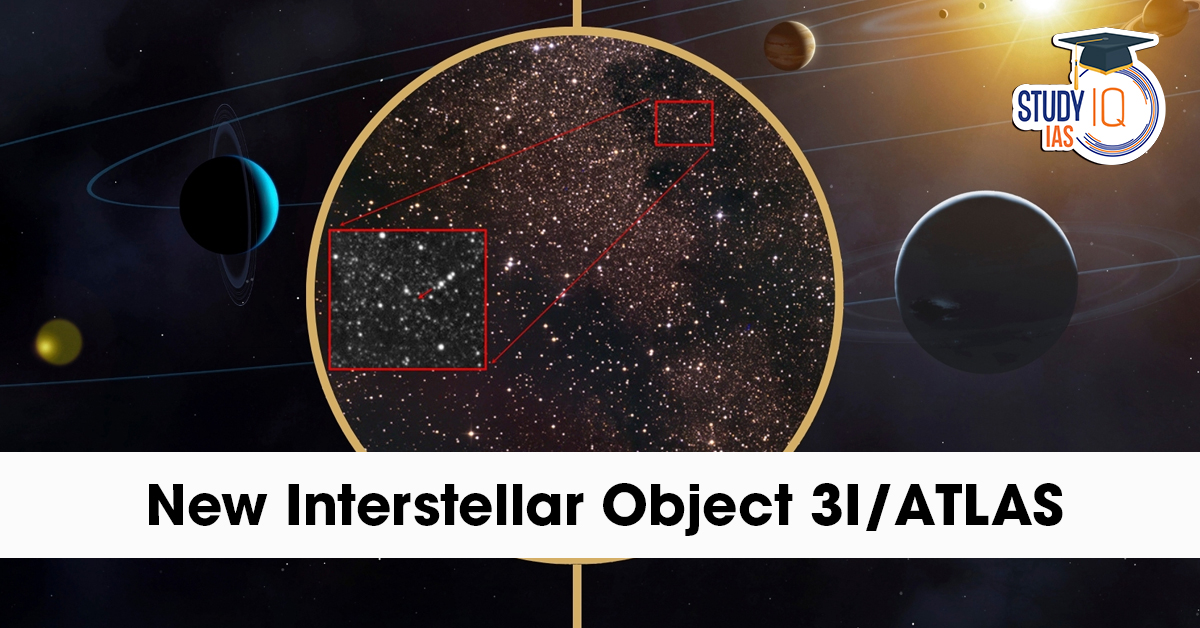Context: On July 1, scientists operating the ATLAS telescope in Chile announced the discovery of a celestial object named 3I/ATLAS, which had been under observation since June 14.
About 3I/ATLAS Interstellar Object
- 3I/ATLAS is an interstellar comet, possibly the oldest comet ever observed, potentially older than the solar system by over 3 billion years.
- It was identified based on its highly elliptical, hyperbolic orbit and high velocity of 57–68 km/s relative to the Sun.
- Its path points back to the constellation Sagittarius, indicating an origin outside the solar system, possibly from the Milky Way’s thick disk.
- Because of its hyperbolic orbit, it will pass through the solar system once only and never return.
Closest Approaches
- Closest approach to Earth: ~270 million km
- Closest approach to the Sun: ~210 million km, expected on October 29–30, 2025, just inside Mars’s orbit.
Physical Characteristics
- 3I/ATLAS is an active comet, displaying a coma — a cloud of dust and ice particles around its nucleus.
- It is expected to form a tail as it nears the Sun due to solar heating.
- Photometric studies reveal a reddish colour, with a spectral slope of ~1.3% per 100 nm, indicating the presence of complex organic molecules or water ice.
- The nucleus is estimated to be 10–30 km wide, making it larger than previous interstellar visitors:
- 1I/ʻOumuamua (2017)
- 2I/Borisov (2019)
Ongoing Research
- Its composition and rotation period are currently under active investigation using ground-based telescopes across the globe.


 Advanced Air Defence Radars: Types, Comp...
Advanced Air Defence Radars: Types, Comp...
 Ion Chromatography, Working and Applicat...
Ion Chromatography, Working and Applicat...
 Broadly Neutralising Antibodies (bNAbs):...
Broadly Neutralising Antibodies (bNAbs):...

























